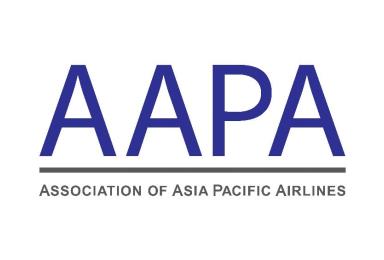KUALA LUMPUR, 28 May 2020: Preliminary April 2020 traffic figures released Wednesday by the Association of Asia Pacific Airlines (AAPA) showed that international air passenger markets were battered by the effects of the COVID-19 pandemic.
The rapid spread of the virus, resulting in border closures and travel restrictions across the world, forced an almost complete shutdown of international airline operations.

Meanwhile, air cargo markets remained active but were affected by weakening demand, and disruptions to global supply chains, including the sharp reduction in passenger belly-hold capacity.
Overall, Asia Pacific airlines saw international passenger numbers plunge 98.8% year-on-year to a combined total of just 368,000 passengers in April compared to the 31.9 million carried in the same month last year.
The average international passenger load factor slumped to a historical low of 28.0% for the month as available seat capacity declined by 94.6%.
With the Covid-19 crisis escalating in many countries, community-wide lockdowns and social distancing measures dampened consumer demand leading to a marked slowdown in global trade and manufacturing activity. As a result, Asian airlines saw air cargo demand, as measured in freight tonne-kilometres (FTK), fall by 28.3% year-on-year in April.
In addition, the grounding of most of the region’s passenger fleets further reduced air cargo capacity in the market. Although partly mitigated by additional freighter operations and the deployment of cargo-only passenger flights, offered freight capacity fell by 38.3%, leading to a 9.4 percentage point increase in the average international freight load factor to 67.5% for the month.
Commenting on the results, AAPA director general Subhas Menon said: “The April traffic numbers underscore the devastating impact of the COVID-19 pandemic on global air travel markets. Uncertainty remains as to how long the crisis will persist. Nevertheless, with infection curves showing signs of flattening, it is hoped that conditions are beginning to bottom out.”
“While severe travel restrictions continue to limit the early restart of aviation activity, there are encouraging signs in the market. A number of airlines have begun restoring domestic flights, while a small number of international flights are still being operated, with plans to operate additional services as border restrictions are progressively relaxed. However, patchy, uncoordinated measures across countries, including various screening protocols and often onerous quarantine requirements, are deterring passengers from flying, and slowing the process of restarting aviation.”
Menon concluded: “The countries in the Asia Pacific region were the first to encounter Covid-19 and are the first to witness some stabilisation and degree of control over the spread of the disease. Hopefully, the region can also lead the much-needed recovery in air travel. The progressive resumption of international air services will only be possible if a globally harmonised, outcome-based mitigation framework is adopted across countries.
“We welcome ICAO’s leadership in setting up its Covid-19 Aviation Recovery Task Force (CART) to recommend strategic priorities and policies for States and industry operators. Asia Pacific airlines remain committed to working closely with governments and relevant international bodies towards a timely restoration of air services, and supporting the revival of trade, tourism, economic and social activity.”






